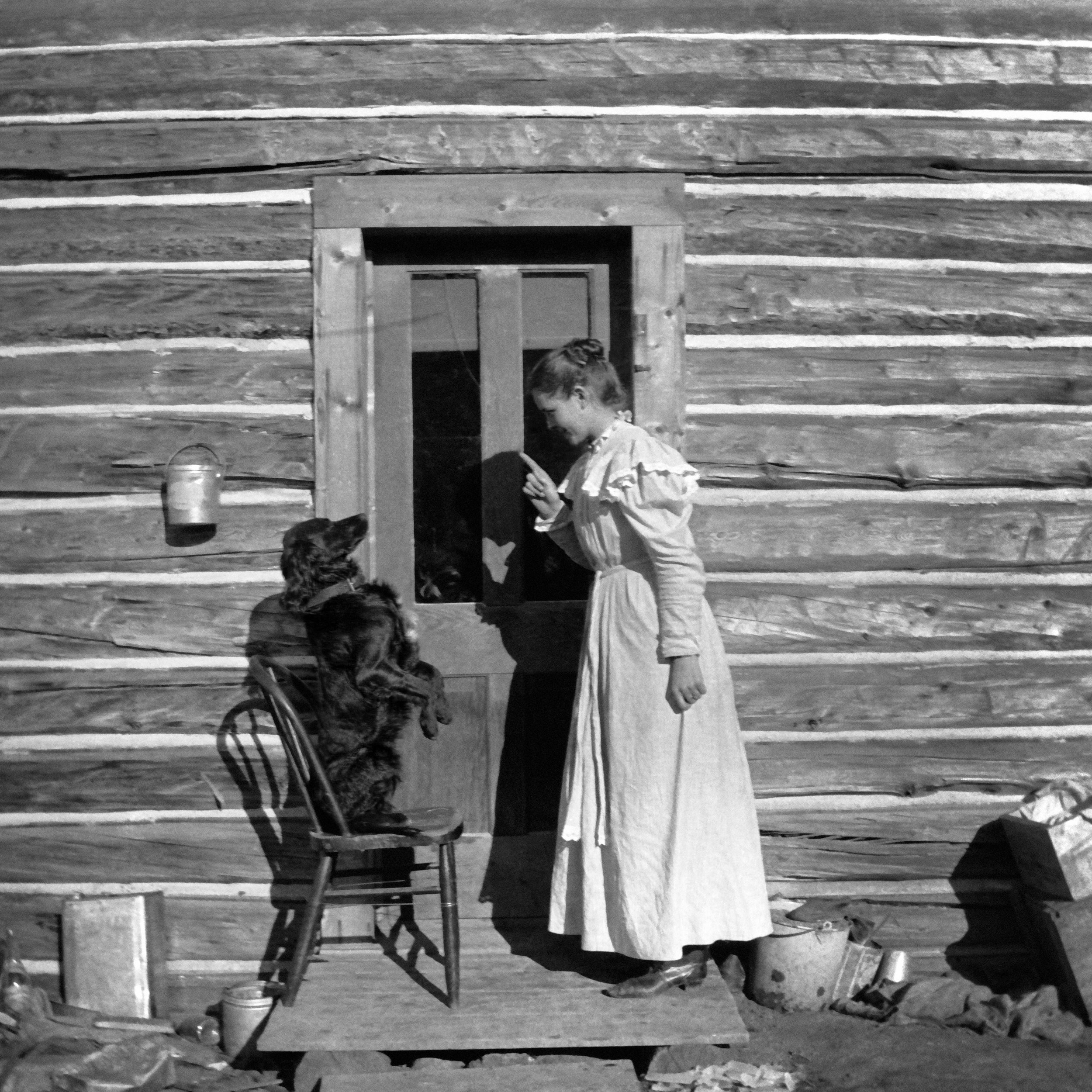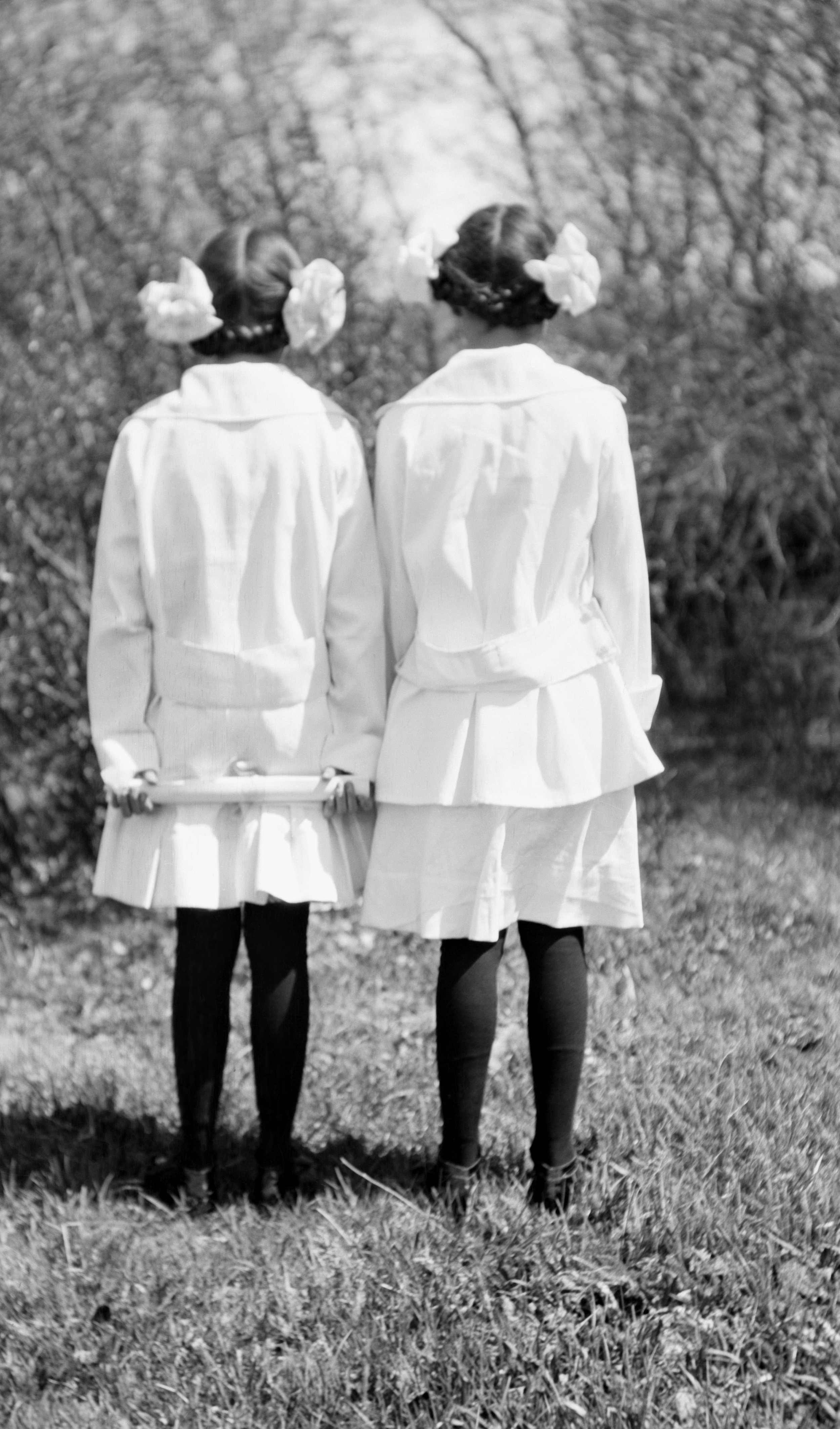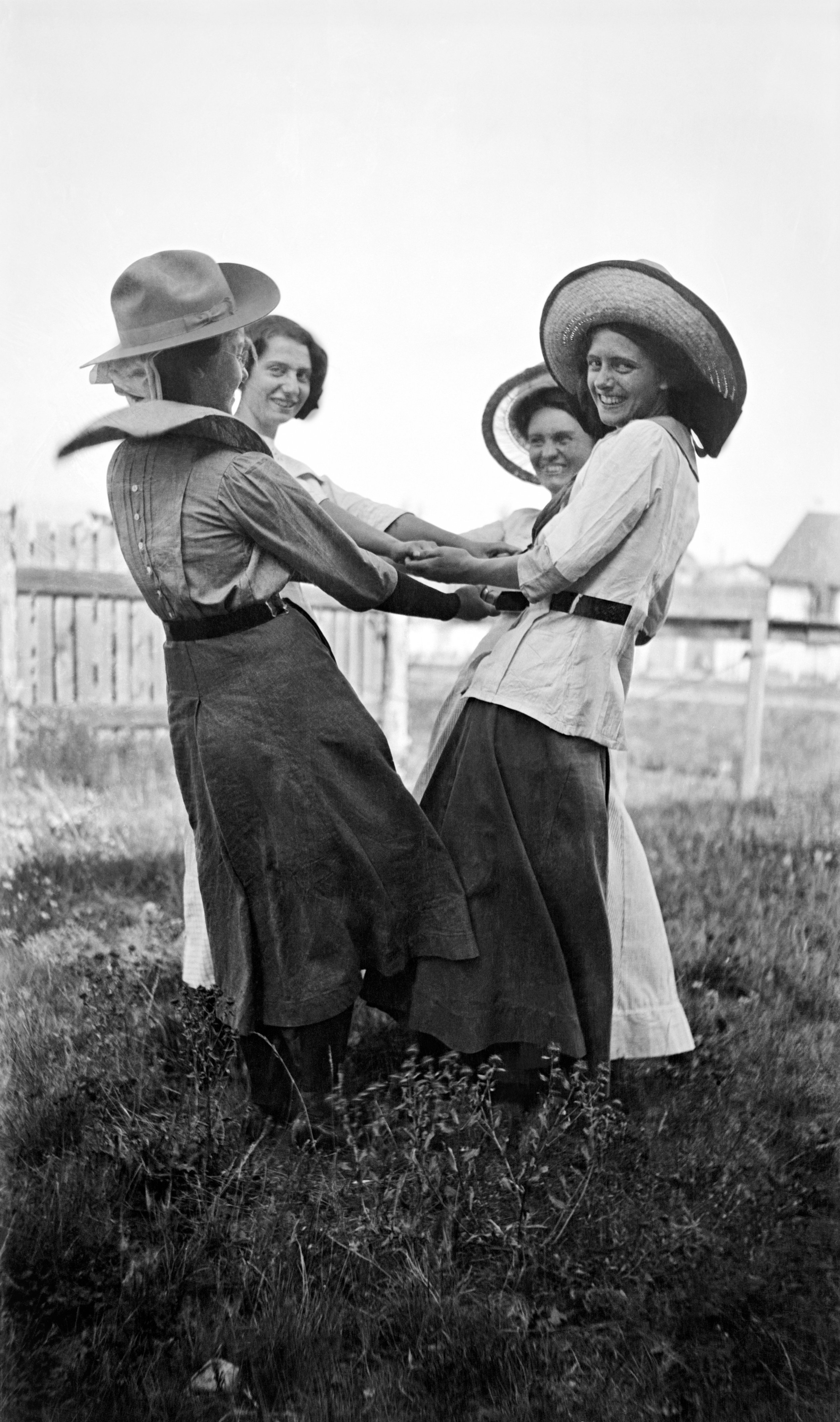Lora Webb Nichols: Heap-O-Livin | Alice Austen House
Lora Webb Nichols. Lora Oldman and Duke, 1902. Courtesy of Alice Austen House.
Written by Makenna Karas
Photo Edited by Kit Matthews
Enshrouded by the technology that increasingly governs our lives, is it easier than ever to fall out of touch from the present moment. Minor occurrences–a child sleeping, a woman laughing–do not hold our attention like they used to. In honor of a period of time when they did, Nicole Jean Hill has selected images from the life of Lora Webb Nichols, a photographer who intimately documented her life in the late 19th and 20th centuries in rural Wyoming. Titled “Heap-O-Livin”, Hill has curated an exhibit that is on display in the contemporary galleries of the Alice Austen House through February 4, 2024.
Lora Webb Nichols. Crete Wood & Gertrude McKay Dressed Up for Eighth Grade Graduation, 1916. Courtesy of Alice Austen House.
Hill specifically selected images that document the life of Nichols from age sixteen to thirty, for it was this time period where Nichols transitioned to being a wife and mother, forever leaving girlhood behind. “Crete Wood & Gertrude McKay Dressed Up for Eighth Grade Graduation” acts as an ode that lost innocence with its eerie illustration of two little girls in white, backs to the camera, looking out at a world that they are just beginning to come to terms with. The background of the shot is blurred to a haze suggestive of the disorienting nature that accompanies growing up. Their pure, white attire and carefully fastened braids directly contrast the chaotic, darkened world that spins around them, pulling them closer inside of it with each passing moment. Girlhood was a short lived experience circa the early 1900s in rural Wyoming.
Lora Webb Nichols. Alice, Nina Platt, Lillian Platt, and Ruth, 1912. Courtesy of Alice Austen House.
Yet despite living in a harsh, patriarchal environment that quickly ushered girls into women, an undeniable thread of female empowerment runs throughout the exhibition. It is clear that women stuck together, forming vital bonds. Images such as “Alice, Nina Platt, Lillian Platt and Ruth”, document this sisterhood that Nichols felt with the women of her life, showcasing the ways in which they held onto each other for support. Within the image, each woman is leaning back, putting her faith in the hands of another, creating a circle of trust that evokes girlish joy on each face. When discussing her interest in the collection, Hill explains that “The people in Lora’s images do not look like strangers to me”, speaking to the profound ability of the shots to transcend time and space, effortlessly pulling you into their world.
Lora Webb Nichols. Babies on Burro at Willow Glen, 1900. Courtesy of Alice Austen House.
Hill was also intentional to select images that tell the story of mundane, everyday life in this foreign world that has long since gone away. Photographs such as “Lora Oldman and Duke” carry a whimsicality that a contemporary viewer will immediately connect with. The life of Nichols is not one that we will ever live. We will never know what it feels like to be a mother and homemaker in a rural town before the internet. But we do know the human spirit. We do know what it means to play, laugh, and reach for a camera to capture an endearing moment. The posture of the dog and the reaction of the women is spirited, saturated in a sly humor that humanizes an otherwise distant past. We can see ourselves within this moment, revealing the undeniable ability of an image to connect audiences across eras through nothing more than a raw expression of the human condition.
Lora Webb Nichols. Bert Oldman Jr. Sleeping, 1908. Courtesy of Alice Austen House.












